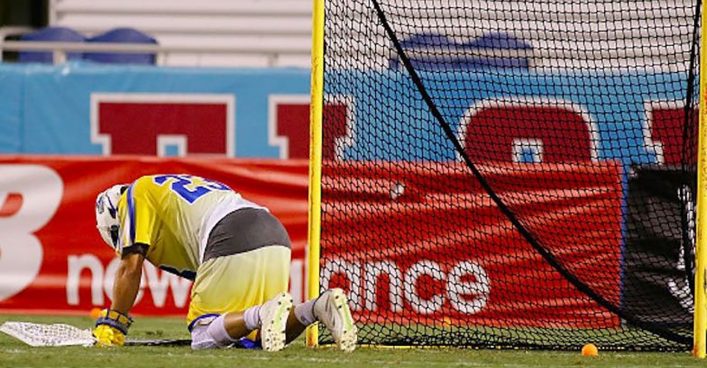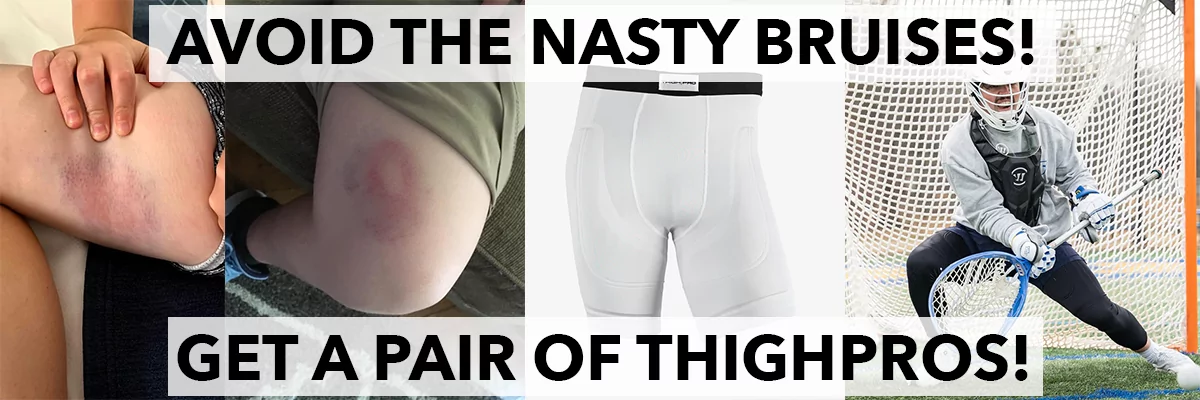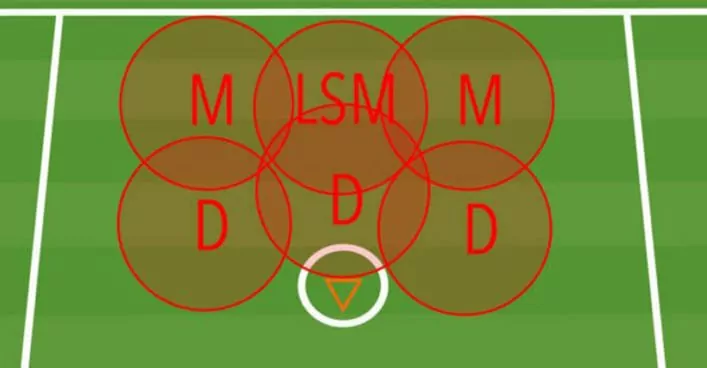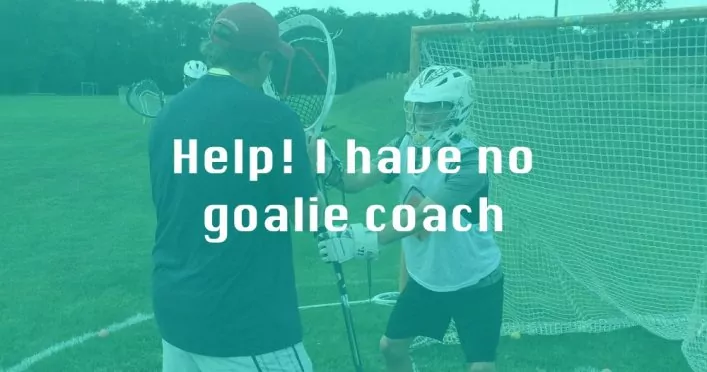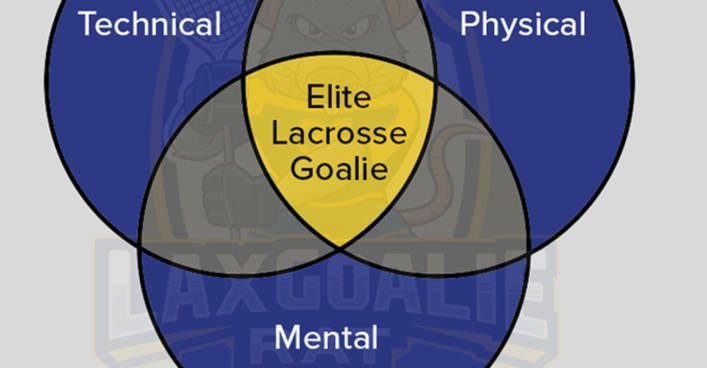A few days ago I recorded a podcast with a goalie I’ve wanted to have on the show for a long time.
It was pretty cool but I didn’t think I performed as well as I could have.
When we finished recording, I opened my phone and checked my Instagram and saw a negative comment someone left on one of my posts.
Immediately afterwards, negative thoughts and questions started flooding my conscious.
Am I making a difference with this? Does this work I do matter? Am I doing it to the best of my abilities? Will this lead to anything?
Doubts. Fears. Anxieties.
This is the part nobody tells you about.
Starting that new venture, stepping outside the familiar path, or putting yourself out there. It’s not all that different than endeavoring to be a great lacrosse goalie.
You’re cruising along and then a bad game or 2 bad games in a row.
Anxiety kicks in. You doubt yourself.
Negative thoughts creep into your mind from all angles.
You question your sanity.
So what do you do in a situation like that?
In this post I want to introduce a mental framework of 4 questions developed by Byron Katie that can help anyone (not just lacrosse goalies) win the battle against your negative mental thoughts.
Negative Thought Example
There are a plethora of different negative thoughts that could enter a lacrosse goalie’s mind at any point.
For the purposes of this post, let me give you a very real example that we can run through this 4 question framework.
I was leading a session for my Lacrosse Goalie Summit discussing mental wellness with motivational speaker and wellness coach Loryn Strange Watkinson.
A parent entered a question into the chat –
My son Dillon is 8 years old and autistic and he gets tremendous anxiety and frustration to the point where it gets overwhelming. He says – “Hey Mom, maybe if I’m not the goalie and I just play in the field, we won’t lose anymore.”
During the Lacrosse Goalie Summit we were doing product giveaways and to enter you had to tag me in a picture watching the summit. So I knew Dillon already. This champ right here…
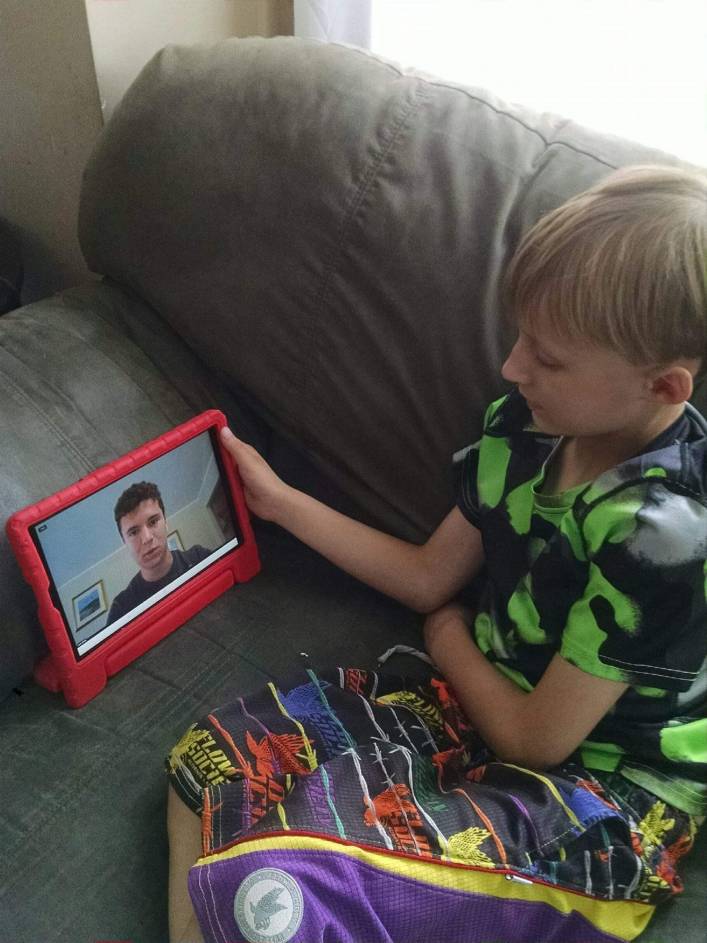


As I read the question aloud to Loryn when I got to the end I felt tears forming in my eyes as I thought about Dillon, this 8 year old goalie just getting started and having such a strong negative thought.
Let’s help Dillon! Let’s help every goalie who doesn’t know how to handle the negative thoughts that enter into your brain.
When you get a negative thought, write it down and then run that thought through these 4 important questions.
Question 1 – Is it true?
This question can change your life. Be still and ask yourself if the thought you wrote down is true.
The answer is one word – yes or no.
This is step one when a negative thought enters your mind. We first ask ourselves: is it true?
So in our example with Dillon – if I’m not the goalie and I just play in the field, we won’t lose anymore – is that true?
Is it?
Is there someone else on the team that is a better goalie than you?
Probably not. I mean I don’t know his team but I know Dillon loves being the goalie.
Even if you’ve just played goalie for a single season, the odds are YOU are the best goalie on your team.
Having you in goal likely gives the team the best chance to win, right?
And heck, maybe there is a better goalie on your team. But they’re also the best athlete on the team. So if you replace your best attackman, best middie, or best defenseman and put them in the goal, will you not lose anymore?
The answer is likely no.
Whenever a negative thought enters your mind, the first thing we ask ourselves: Is it true?
Most times the answer is no and we can dismiss that negative thought because we can’t let a lie impact your mentality and outlook on life.
All the suffering that goes on inside our minds is not reality, says Byron Katie. It’s just a story we torture ourselves with.
So I love question #1 because the mind works fast and this question slows you down. It forces you to pause and reconsider.
Question 2 – Can you absolutely know that its true?
If your answer is “No” to question 1 you can skip this question and go to question 3.
But the first question is so important we’re actually going to revisit it again.
Some people when dealing with a negative thought might believe it to be true on the surface.
But only when they go deeper and dig into the logic and try to justify it, do they realize they cannot be certain that the negative thought is true.
Remember that the answer to the first two questions is just one syllable long – it’s either yes or no.
Notice if you experience any defense as you answer. If your answer includes “because . . .” or “but . . . ,” this is not the one-syllable answer you are looking for.
Let’s assume Dillon’s answer to question 1 was “Yes”.
If I’m not the goalie and I just play in the field, we won’t lose anymore – can you absolutely know that’s its true?
The only way to absolutely know its true is to make a switch at goalie and see if your team stops losing.
Even if your team wins one game without you in goal, is that enough information to make the decision that the team stops losing if you just play in the field? What if they win 2 games and then lose 1?
How can you know that that negative is absolutely true?
Question 2 is like trying to find an anomaly. If I can find even a shadow of a doubt that it’s not true, then my answer has to be no.
If you arrive here and the answer is still yes, good. If you can absolutely know that the negative thought is true, that’s great and its time to move onto question 3.
Question 3: How do you react—what happens—when you believe that thought?
With this question, you begin to notice internal cause and effect.
With this one we get into more a meditative, self-reflection state asking ourselves questions like:
- What emotions arise when you believe that thought?
- What images of past and future do you see when you believe the thought?
- How do you treat yourself and others when you believe the thought?
“If I’m not the goalie and I just play in the field, we won’t lose anymore” – what happens when you believe that thought.
Perhaps you feel guilty for the losses, worried you’re letting the team down, nervous to be the goalie for the next game.
Write down how you react, what happens when you believe this negative thought.
If you struggle to think of emotions, Byron Katie has created a document that lists them. Pick the ones you feel.
Examine how you play when you have that negative thought. How do you treat your teammates? How do you feel about the sport of lacrosse?
How does your body react to this? You probably sulk down, slump your shoulders, and project no confidence.
Get in touch with your attitude, your body, your emotions, your words.
This can be tough. Nobody said the lacrosse goalie journey was an easy one. But don’t move away from the difficult challenges – we sit in it.
What do you feel? How well do you play in the games? How do you treat yourself when you give up a goal?
Be still and realize how you react when you believe that thought.
I encourage all goalies to get a pen and paper and write down your answers as an exercise.
Make a list and be specific.
You can see that when you believe the thought, there is a disturbance that can range from mild discomfort to fear or panic.
Hopefully that helps the goalie realize how powerfully poor it is to believe a negative thought.
Our thoughts create our experiences, and thus, we experience what we think.

Question 4: Who would you be without the thought?
Now imagine yourself in the presence of a young Dillon who doesn’t believe that thought.
How would your goalie game (or even your life) be different if you didn’t have the ability to even think the stressful thought?
How would you feel? Write it down.
Which do you prefer—life with or without the thought? Which more peaceful? Which allows you play better? Which gives you more joy? Which allows you to make more saves?
The ironic thing about lacrosse goalie is that if you engage with more empowering thoughts, they boost your confidence and thus trigger a more positive emotional state which will then be reflected in how your body reacts.
It’s important to understand that the question is not asking you to drop the thought. It’s just asking you hypothetically, “How would your experience be different in that situation without that thought?”
So try living a few moments in a world where you are without that negative thought.
Next Important Step: Turn That Thought Around
The final step in this exercise is to do a “turnaround”.
The “turnaround” gives you an opportunity to experience the opposite of what you believe.
Depending on your negative statement there may be a few different ways to create a turnaround so you may need to play with the wording a bit until you arrive at a version that makes sense.
“If I’m not the goalie and I just play in the field, we won’t lose anymore” – if we do a turnaround on that thought it might look something like this:
- “If I’m the goalie, we will win” – or perhaps…
- “If I’m not the goalie and I just play in the field, we will keep losing”
Once you have found one or more turnarounds to your original statement, find at least three specific, genuine examples of how each turnaround is true in your life.
- I’m making all the saves I should be making
- I made a 1×1 save last game
- The defense respects me as a goalie
- I practiced goalie for 9 hours last week, more than anyone on the team
If you have more than 3 examples keep writing!
These examples help the mind see the point of view that perhaps it had missed before. They help the mind see the reality of the situation.
Conclusion
The mind is a powerful thing. It doesn’t take much to get it all worked up.
One negative comment is often enough for your mind to question the years of hard work you put in.
One bad game is often enough for your mind to create a story that you are not a good goalie despite evidence which says the contrary.
Much of the suffering that goes on inside our minds is not reality says author and life coach Byron Katie. It’s just a story we torture ourselves with.
She has a systematic way to go back and take a second look at the thoughts that make you stressed. It’s this 4 question framework that you can run negative thoughts through –
- Is it true?
- Can I absolutely know its true?
- How do you react—what happens—when you believe that thought?
- Who would you be without the thought?
Finally we’ll do a “turnaround” exercise where we give ourselves the opportunity to experience the opposite of what you’re thinking.
I like this process because it’s pretty quick and easy to learn.
And when you start questioning your negative thoughts many times you’ll find you have nothing to worry about.
Until next time,
Coach Damon








 14 Amazing Lacrosse Goalie DrillsAug. 1, 2024
14 Amazing Lacrosse Goalie DrillsAug. 1, 2024 Quick Guide To Lacrosse Slang TermsApril 14, 2025
Quick Guide To Lacrosse Slang TermsApril 14, 2025 Lacrosse Goalies Rules To KnowJune 28, 2022
Lacrosse Goalies Rules To KnowJune 28, 2022 Lacrosse Goalie Step-by-Step Guide to Getting RecruitedFebruary 6, 2022
Lacrosse Goalie Step-by-Step Guide to Getting RecruitedFebruary 6, 2022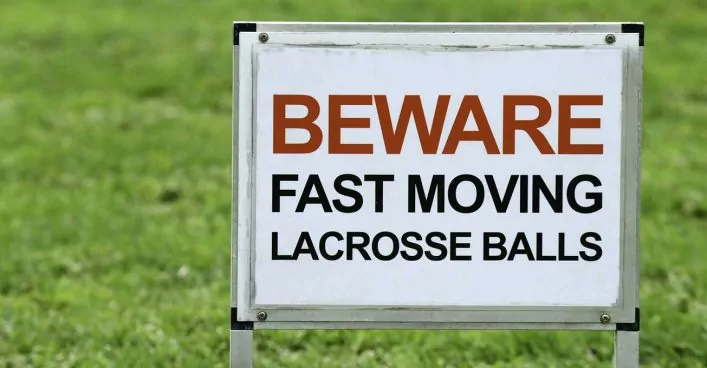 18 Lacrosse Goalie Drills to Improve Your GameApril 24, 2025
18 Lacrosse Goalie Drills to Improve Your GameApril 24, 2025 7 Elements of a Great Lacrosse Goalie StanceAug. 1, 2020
7 Elements of a Great Lacrosse Goalie StanceAug. 1, 2020 12 Lacrosse Goalie Tips To Take Your Game to the Next LevelSeptember 10, 2024
12 Lacrosse Goalie Tips To Take Your Game to the Next LevelSeptember 10, 2024 STX Eclipse 3 Goalie Head ReviewApril 24, 2025
STX Eclipse 3 Goalie Head ReviewApril 24, 2025 Lacrosse Goalie WorkoutAug. 12, 2019
Lacrosse Goalie WorkoutAug. 12, 2019 The Basics of Making a SaveJune 29, 2021
The Basics of Making a SaveJune 29, 2021






